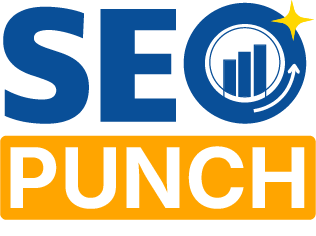Boost Your Website’s Visibility: The Ultimate Guide to Effective SEO Strategies
In the digital arena of today, a pretty website is just the start. A site has to understand and implement the right SEO in order to be completely realized and drive volume in search. Search Engine Optimization (SEO) is basically the backbone of any form of online visibility; thereby ensuring that your website ranks the highest in the SERPs of a specific search engine. The following is a guide into some of the essential SEO strategies, tools, and techniques to transform performance and make your site highly visible.
Understanding SEO
Creating a smooth user experience while complying to search engine algorithms is the goal of SEO, not only packing keywords and chasing backlinks. Over time, a well-optimized website increases authority, credibility, and trust, which makes it simpler for prospective buyers to locate and interact with your business. An efficient SEO strategy serves as a link between your useful content and the appropriate audience, regardless of how old your company is. Let’s examine the key components that make up a powerful SEO presence.
Now that the vague part is done, before I get to specific tactics, let me define what SEO is. In simpler words, SEO is a set of activities aiming at better positioning your website among search results, from keyword research to link building and utilization of SEO tools. SEO is a whole package, and the higher you rank, the more traffic you will receive to your site.
- Keyword Research: The Foundation of SEO
Keyword research forms the foundation of an effective SEO campaign. This is about finding what the target customer needs to look for while searching for your products or services. Now, here are a few ways to do effective keyword research:
Identify Your Target Audience
Know your audience: What are your target audiences’ pain points? What are they asking? Make a note of it. Now, use tools like Google Trends, AnswerThePublic, or SEMrush to come up with popular searches on topics related to your niche.
Utilize SEO Tools
An investment in quality SEO tools like Ahrefs, Moz, or Ubersuggest would serve just fine. All these can give you an idea about finding high-volume keywords, analyzing competition, and making a find for long-tail keywords-that may be easier to rank.
Analyze Competitor Keywords
Look at the searches your competitors have been able to rank for. This can immediately show you the landscape but also draw attention to gaps that you are likely to exploit. Tools like SpyFu or SimilarWeb can help you discover this information.
2. On-Page SEO: Optimizing Your Content
Now that you have your keywords, it’s time to get some practice in on-page SEO. This involves optimizing the page so it ranks better and receives more relevant traffic.
Optimize Title Tags and Meta Descriptions
The title tag is one of the first things users will see in the search results, so this needs to be a convincing title. It should include the main keyword and be no longer than 60 characters. This is then followed by a compelling meta description 150-160 characters long containing the same relevant keywords as the page and encouraging clicks.
Use Header Tags Wisely
Using header tags, such as H1, H2, and H3, for instance, organizes your writing. Use H1 for the main heading, H2 for subheadings, and then H3 subheadings. That does not only make the content more readable but also informs search engines what this content is about.
Content Quality and Relevance
It would mean that content is the king. So, try to make worthwhile informative content for your users’ benefit. Use keywords naturally but don’t keyword stuff as it attracts penalties. Try to aim at target keyword density between 1-2%.
Optimize Images and Alt Text
Images can really do wonders with respect to user experience, but it will also slow down your site a bit. Optimize the size of your images to speed up page loads and add alt text that contains relevant keywords. This makes your content more accessible and easier for search engines to understand.
3. Link Building: Establishing Authority
Link building is another important aspect of search engine optimization. A backlink from an external website means that their site users trust and appreciate your content, basically voting for you.
Create Shareable Content
It encourages other sites to link back to you as that is good-quality informative content. It could be infographics, step-by-step guides, or original research.
Guest Blogging
Get your backlinks by using guest posts on quality sites. Before you do, however, check that it is relevant to their audience and must have a link back to your website.
Engage in Community Forums
Online communities, such as Reddit and Quora, are great spots to establish one’s authority. One can engage the community by providing high-quality answers and linking to his or her site when appropriate to garner meaningful traffic and build up a link profile.
4. Technical SEO: Ensuring a Smooth User Experience
Technical SEO is actually the process of optimizing the backend of your website. This will ensure that search engines are able to crawl and index your site well.
Improve Site Speed
A slow-loading site can easily experience a higher than normal bounce rate. You can check your site’s speed with Google PageSpeed Insights or GTmetrix and get good actionable recommendations.
Mobile Optimization
Needless to say, the development of mobile browsing means that sites have to be mobile-friendly. Therefore, implement the responsive design and ensure it works fine on any device.
Create an XML Sitemap
An XML sitemap helps the search engine know your site’s structure, and aids it in indexing your pages more effectively. Be sure your sitemap is updated regularly and submitted to the search engines.
5. Monitor and Adjust: Using SEO Tools
Once you’ve set your SEO in place, however, it is only just getting started. You do not stop checking and updating your site to achieve a better position once you have begun.
Use Analytics Tools
You can also use Google Analytics and Google Search Console to monitor how well your website is performing. Keep records of organic traffic, bounce rates, and keyword rankings. This will show you exactly what is working and what needs more refinement.
Conduct Regular Audits
They also help in identifying areas that need improvement by carrying out regular SEO audits. Broken links, duplicate content, and a host of other issues harming your rank can be identified using tools such as Screaming Frog or Ahrefs.
Stay Updated on SEO Trends
SEO is constantly changing. Stay updated regarding changes in new algorithms, industry changes, and the latest updated tools. Knowledge must be constantly upgraded through reading SEO blogs, attending webinars, and taking part in online courses.
Conclusion
In the digital arena of today, a pretty website is just the start. A site has to understand and implement the right SEO in order to be completely realized and drive volume in search. Search Engine Optimization (SEO) is basically the backbone of any form of online visibility; thereby ensuring that your website ranks the highest in the SERPs of a specific search engine. The following is a guide into some of the essential SEO strategies, tools, and techniques to transform performance and make your site highly visible.





